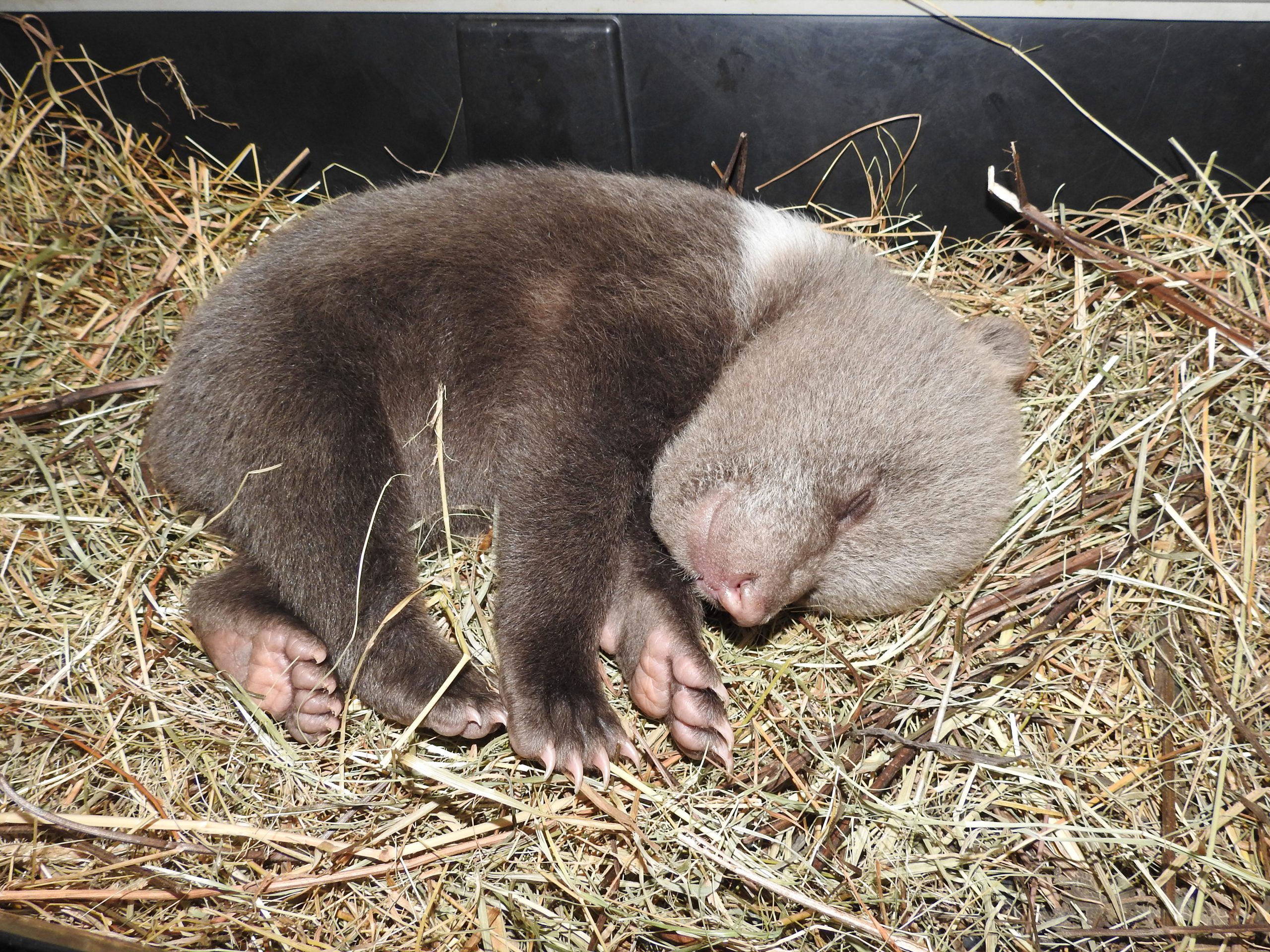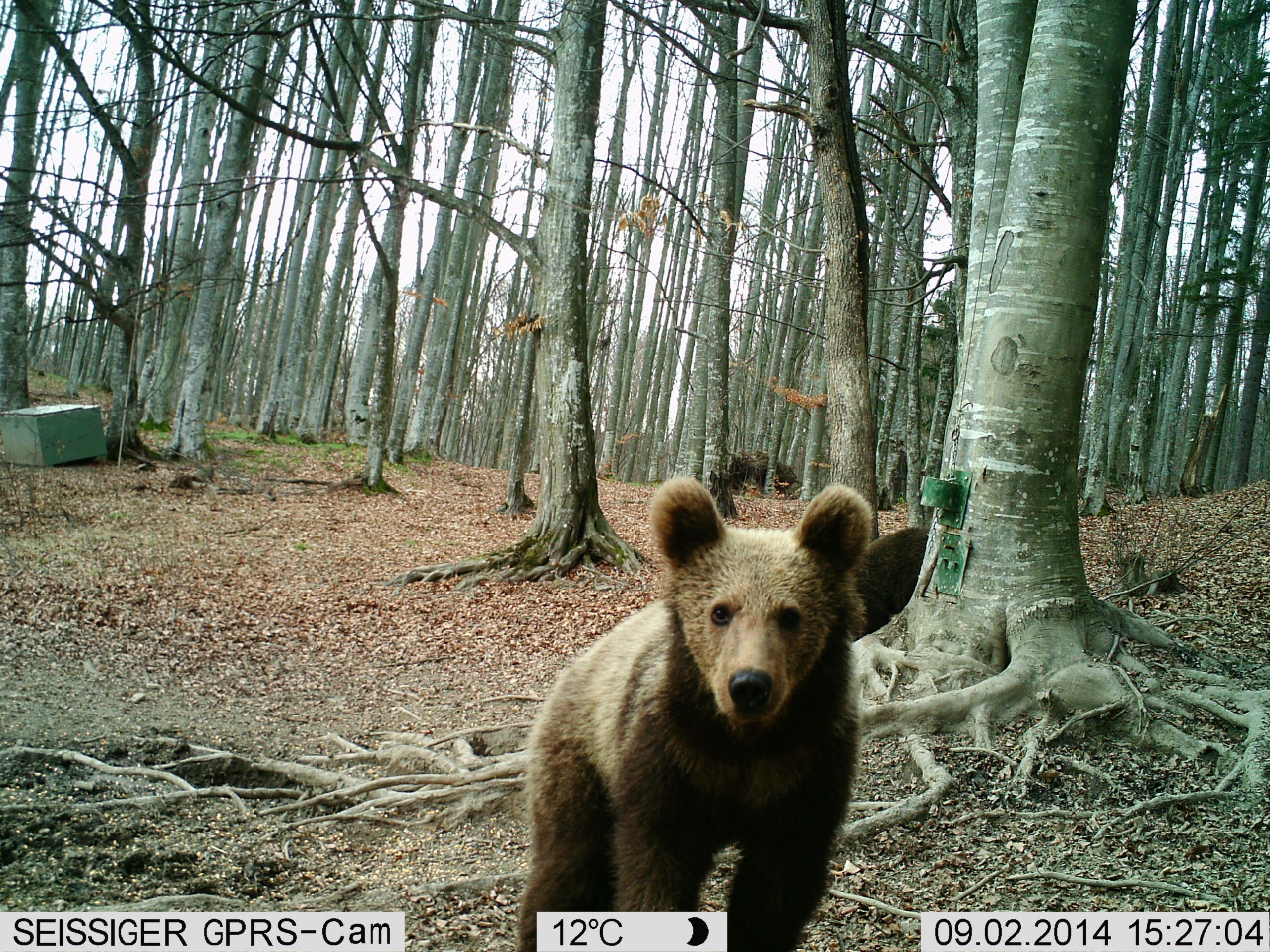“Bear Facts” is a mini-series of short movie clips on brown bear biology and ecology, essentially addressing the conservation and management of the species. Through the series, Milvus Group aims to spread correct and factual information about bears to try to counterbalance the omnipresent negative reports and frequent misinformation in the Hungarian and Romanian mass media. The post was sent by Csaba Domokos, brown bear program manager at Milvus Group – Bird and Nature Protection Association.
Brown bear cubs are usually born in January, in the security of their winter dens. Litter sizes vary from one to five, but the typical size is two or three. At birth, a cub weighs approximately 0.5 kg, which usually represents less than 0.5 percent of its mother’s weight. Cubs spend the next three months in the den, together with their mother. During this period, females lactate without feeding or drinking, relying entirely on fat reserves accumulated before the start of the winter sleep. Females with cubs are the last bears to emerge from winter dens. By April, the cubs can weigh as much as 15 kg each, have fully developed milk teeth, and are able to follow their mother. Most have a whitish V-shaped neck patch, which usually fades by their 2nd year.

Lactation usually lasts for 1.5-2.5 years, but the young can remain with the mother for up to 4.5 years. Two females monitored by the Milvus Group through GPS collars abandoned their cubs in May of the cubs’ second year, at the start of the mating season. At that moment, the cubs were approximately 1 year and 4 months old. After the end of the mating season, mothers and cubs were not reunited. However, even after separating from their mother, siblings often stay together for a while.
The most important threat to small cubs is human disturbance of the winter den sites – if a female abandons her litter, the cubs will die.
After the cubs emerge from the den, following their mother, they must face another threat: They can be killed by male bears during the mating season. Females do not mate while caring for their offspring; however, if they lose their cubs, estrus will already happen the following year, instead of a pause of 2-3 years while she would care for her litter. Through infanticide, male bears try to improve their chances to sire the next litter.
Females employ a number of strategies to prevent infanticide. In the mating season, they mate with several males, as male bears don’t kill their own offspring – perhaps by recognizing the females they mated with the previous year. Females also avoid the best feeding areas to minimize the chances of encountering potentially dangerous males. However, this also means that less and only poorer quality food will be available for them and their cubs.

The avoidance of dangerous males can explain the frequent sightings of females with new cubs near urbanized areas. A female monitored by the Milvus Group through a GPS collar, after emerging from the winter den with her three cubs, spent the next 2.5 months on the edge of a small town without going into the town. Another female with one cub spent this period close to a busy road. After the critical period passed, both females resumed their normal movements and activities, using their full home ranges, accompanied by their cubs.
Title image: Sibling brown bear cubs. Photo: Csaba Domokos